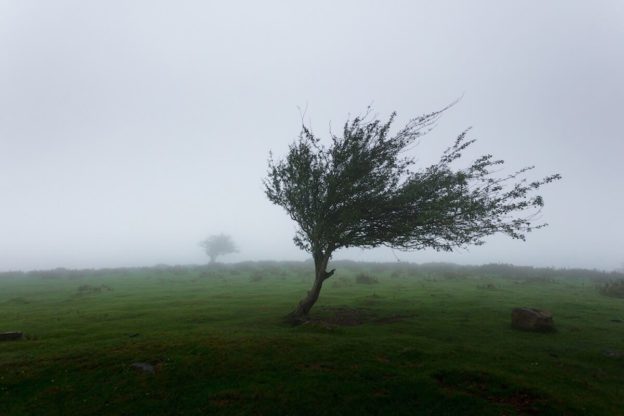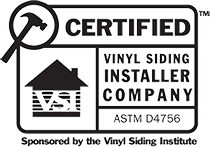Do you live in an area that suffers from extreme weather, especially winds? You might be worried about how much wind can your roof withstand. When those wind speeds really start picking up and you notice lots of extra noise in your roof, it can be a worrying time.
Try not to worry too much, but make sure you’ve got the roof you need to withstand any weather you’re likely to have.
In this article, we’re going to look at:
- How much wind can a roof withstand?
- How strong is your house against wind?
- Roof wind damage and more.
What might affect the strength of your roof in heavy winds. Many different roof materials have different wind ratings, so we’re going to look at some of the best – along with some to avoid. We’ll also look at how to secure your existing roof during high winds to make it stronger and more able to withstand extreme conditions.
How can strong winds damage roofs?
If you live somewhere windy, you might be a bit more concerned about your roof withstanding strong gusts and more. However, often people in windy areas will have had roofs constructed with that in mind, and sometimes homes at most risk are those in areas that don’t normally get a lot of wind and are therefore not prepared.
Heavy winds won’t always affect all of your roof, and the edges will be at the most risk. That’s where problems can start and grow from. Wind pressure will be much stronger at the edges of your roof, so that’s where most damage is likely to be.
As winds hit your roof, your shingles or slates might start to lift around the edges. They could also begin to separate or shift apart. As the winds pick up, shingles could fly off or fall away from your roof.
This could be dangerous to passers by, so you’ll need to be careful. Shingles falling off could also leave your roof even more exposed to the wind and other weather conditions like rain.
Even small holes can cause serious problems in your roof and can extend to the rest of your home. When the protection is gone, wind, rain and more can cause havoc in your roofing area. Missing shingles could be an indication that you need a complete roof replacement, or at least extensive repairs.
Wind isn’t only responsible for damaging your roof directly, it can also carry debris onto it. This, in turn, can damage your roof further, like when large branches puncture the exterior of your roof or leaves block your guttering to cause roof floods and overflowing.
This might seem like a minor issue, but overflowing gutters can actually affect the foundation of your home, so it’s something that should be avoided at all costs.
How do you check your roof for damage after strong winds?
Whenever it’s really windy, you want to keep extra vigilant and make sure you check your roof regularly. However, only go up onto your roof when it is not windy, and when it’s not likely to be.
Always put safety first when checking your roof, use the right safety equipment, and get a professional local roofer to do it if you’re not sure you can do the job with 100% safety.
When looking for damage after heavy winds, look closely at the shingles and make sure they are all still in place. Missing shingles is a big problem, but you also want to check existing shingles to see how well secured they are. Make sure the nails securing shingles are still tightly in place and everything else seems normal.
Also keep a look out for curling or damaged shingles, mold, decay or any other issues. Especially splitting. If you don’t want to do this yourself, you can get a roofing company to check for you.
Many of these will go up and have a look for free, as they might try and sell you a cleaning job. This is a good way to get your roof checked without spending any money, but make sure you’re sure that the work they offer to carry out is necessary before agreeing. You might want to get second and third opinions before you agree to anything.
How can you prevent, maintain and strengthen your roof?
While all roofs do get damaged over time, you can help put in place some preventative measures to keep your roof in good shape for many years. Make sure you check your roof regularly to see if there are any issues, as spotting something early could help stop further damage and bigger repair costs.
1. As we’ve seen, keeping gutters and overflows clear is important, so you might want to do this yourself after heavy winds, if it’s safe to do so. Check regularly even if you haven’t noticed much wind recently.
2. Make sure the edges of your roof are secure at all times, as this is where the wind hits first. If they aren’t, secure them temporarily and then get a professional to come and help.
3. If you live in an area that gets a lot of snow, your roof must be strong enough at all times to withstand a heavier load. Make sure weight is spread evenly over your roof as uneven loads can cause leaks and damage to both your roof and home.
4. Make sure you keep any nearby trees in order so that branches don’t grow over your roof and fall onto it. Make sure the sealant between shingles is strong enough and kept in place at all times. Some sealant doesn’t form the correct bond at low temperatures, so you’ll need to make sure you use the right material for your local area.
Regularly checking your roof is important, especially if you live somewhere that gets a lot of wind. If you notice a problem, get it fixed as soon as possible and call out professional help. It’s a good idea to have a competent roofer that you’re happy with on-call, so you can phone them up when you need them.
We hope this article helped you figure out how much wind can a roof withstand and if your roof is strong enough to hold in the next storm.












